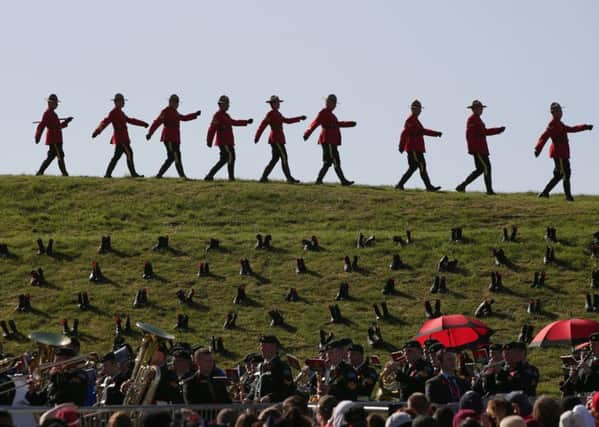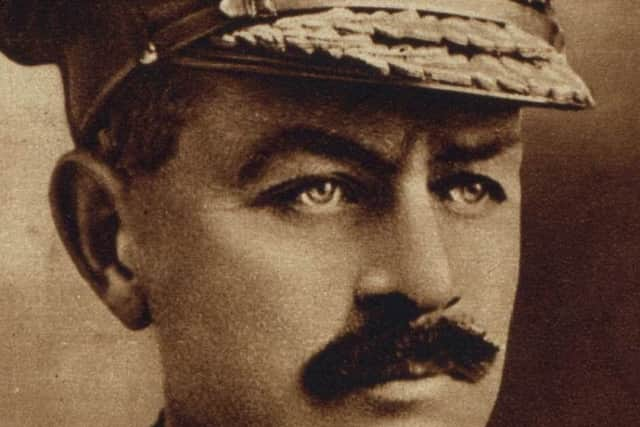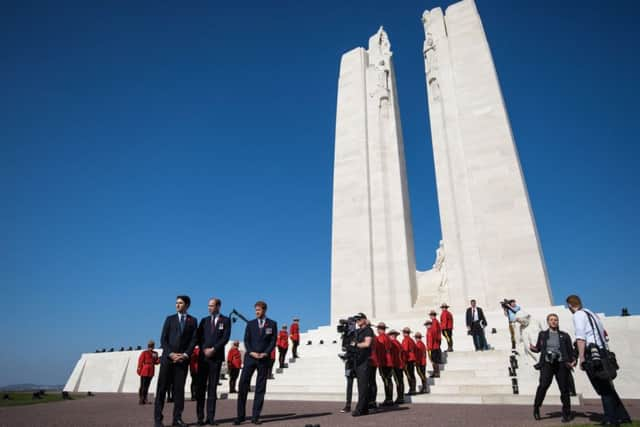Vimy Ridge on a par with Battle of the Somme for nation of Canada


Today Canada has a population of 36 million but in 1914 the country was inhabited by only eight million people.
Nevertheless Canada’s contribution to the war effort was truly remarkable.
Advertisement
Hide AdAdvertisement
Hide AdA total of 619,636 men and women served in the Canadian forces in the First World War, and of these 66,655 were killed and another 172,950 were wounded.


The capture of Vimy Ridge a century ago occupies a place in the Canadian psyche broadly comparable to the place that Gallipoli has in the minds of Australians and New Zealanders or the Battle of the Somme has here in Ulster.
On April 9, 1917 at 5.30am, in the midst of a blizzard, all four divisions of the Canadian Corps, fighting together as a unit for the first time, moved forward to capture one of the most formidable and best defended German positions on the Western Front: Vimy Ridge.
Described by Richard Holmes as ‘one of the wars slickest set-piece attacks’, the capture of Vimy Ridge is widely regarded as the greatest feat of Canadian arms in the Great War.
Advertisement
Hide AdAdvertisement
Hide AdBy April 12, the Canadians controlled the entire ridge, at a cost of 3,598 men killed and a further 7,004 wounded, 10,602 casualties in total.


Four Victoria Crosses were awarded to members of the Canadian Corps for this battle.
The Canadian casualties at Vimy Ridge were not insignificant but they must be compared with the 200,000 Canadian, British, French and German dead who lie buried on the ridge from earlier, unsuccessful attacks.
The French alone had lost 150,000 men in 1915, including about half of the elite Moroccan Division and two-thirds of a full regiment (3,000 men) of the French Foreign Legion, trying to capture Vimy. Many of them lie buried in the huge nearby French National Cemetery of Notre Dame de Lorette. The French briefly captured the ridge but before the French could consolidate their hard-won gains the Germans won it back in a ferocious counter-attack.
Advertisement
Hide AdAdvertisement
Hide AdIt is said that upon learning of the capture of Vimy Ridge, a French soldier exclaimed, ‘C’est impossible!’ (‘It’s impossible!’), and upon learning it was the Canadians who had done so, replied ‘Ah! les Canadiens! C’est possible!’ (‘Ah! The Canadians! It is possible!’).


In the past, for many, if not most, Canadians, the attack on Vimy Ridge marked a turning-point in the country’s march towards distinct nationhood. This view is widely propagated in both military and general histories of Canada.
All nine provinces were represented in the order of battle of the Canadian Corps.
In the words of Brigadier-General Alexander Ross, DSO, who commanded the 28th (North West) Canadian Battalion at Vimy: “It was Canada from the Atlantic to the Pacific on parade. I thought then that in those few minutes I witnessed the birth of a nation.”
Advertisement
Hide AdAdvertisement
Hide AdPierre Berton, the prolific Canadian historian, has less reverentially suggested: “What counts is that in the minds of Canadians Vimy took on a mythic quality in the post war years, and Canada was short of myths. There is something a little desperate – a little wistful – in the commentaries of the twenties and thirties and even later, in which Canadians assured one another over and over again that at Vimy, Canada had at last found its maturity.”


Military historians have attributed the success at Vimy to a number of factors. Pride of place ought to be given to the meticulous planning of Canadian Corps commander Julian Byng (an English aristocrat who became a post-war Governor General of Canada), and his very able subordinate Arthur Currie (who became Canada’s first lieutenant-general).
Byng was “fascinated by Vimy Ridge and the problems it presented” and “spent hours reconnoitring it until he knew its every contour”. His thoroughness annoyed senior British officers, yet proved to be the key.
Curiously Byng was initially not enthusiastic about being given command of the Canadian Corps because he didn’t know any Canadians but he was determined to do his best and he did.
Advertisement
Hide AdAdvertisement
Hide AdByng’s preparations were characterized by relentless training and the assignment of specific objectives to each platoon. By giving units specific goals, troops could continue the attack even if their officers were killed or communication broke down, thus circumventing two of the perennial problems of Western Front combat.
The artillery barrage was brilliantly planned and executed by Alan Brooke, who had introduced the British army to the concept of ‘the creeping barrage’. He had been with the Canadian Corps since early 1917 and had at his disposal the Corps artillery and additional guns borrowed from the British.
The magnificent Canadian National Memorial at Vimy is striking evidence of the great significance which Canadians attach to the battle but Canadian troops were ‘consistently high achievers’ throughout the Great War.
In April 1915 in Ypres Salient the Canadians withstood the first German gas attack on the Western Front and held the line when others fled. In 1916 Canadian troops fought with distinction in the latter stages of the Battle of the Somme, especially in the environs of Courcelette.
Advertisement
Hide AdAdvertisement
Hide AdAfter the Somme, the Canadian Corps developed a reputation as shock troops and the Germans came to regard the presence of Canadians as a reliable indicator of an imminent offensive. It is often said that Canadians completed operations where others had failed. Nowhere has this observation greater force than the capture of Passchendaele, the culmination of the Battle of Third Ypres, on November 6, 1917.
Between August 8 and 11, 1918, the Canadian Corps spearheaded the offensive during the Battle of Amiens. Here a significant defeat was inflicted on the Germans which compelled the German commander-in-chief, General Erich Ludendorff, to call August 8 ‘the black day of the German army’.
After Amiens, the Canadian Corps were in the vanguard of an Allied push that ultimately ended on November 11, 1918 at Mons where the British Empire had first collided with German forces in August 1914.